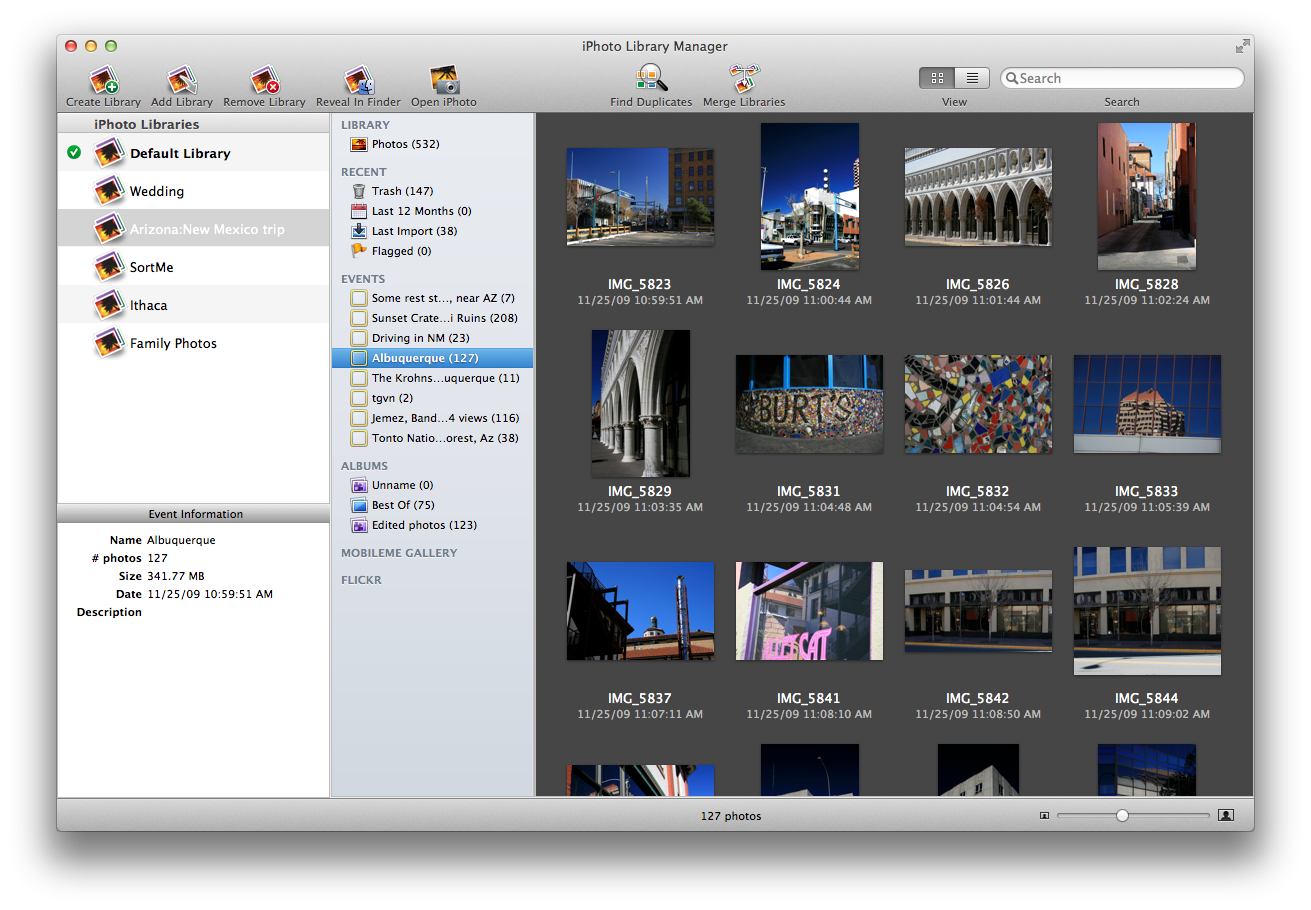Part 1: How to transfer photos from iPhone to Mac using dr.fone?
By default, iPhoto is a photo management program which comes standard on every Mac computer. But if you want change your Mac computer to Windows PC, then you need to transfer you all data from Mac to Windows PC. The most important thing is your photos and videos. You can transfer all your photos from iPhoto to Windows with simple steps. If you’re setting up a new Mac and want to transfer your iPhoto Library Manager setup, by far the easiest way is to use Apple’s Migration Assistant to copy all your data from your old Mac to the new one. This will include your iPhoto Library Manager preferences, library list, and libraries automatically. Manual migration. Mac users coming from iPhoto may wish to move an iPhoto Library to the new Photos app. While importing is an option when first setting up the Photos app in OS X, many users many have skipped the initial setup screens and missed that opportunity to import pictures and images into Photos from apps.

If you want to transfer photos from iPhone to Mac in a hassle-free way, then give a try to dr.fone - iOS Data Backup & Restore. Compatible with every leading version of iOS, it has a dedicated desktop app for Mac and iMac. With it, you can take a comprehensive backup of your photos and restore it afterward. Not just pictures, the tool can also be used to backup other crucial data files like music, videos, contacts, messages, and more. In a simple click-through process, you can move your files between iPhone and Mac seamlessly. To learn how to transfer photos from iPhone to Mac using dr.fone, follow these steps:
dr.fone toolkit - iOS Data Backup & Restore
Backup & Restore iOS Data Turns Flexible.
- Backup your entire iOS device to your computer within on click.
- Preview and restore any data from the backup to a device.
- Export what you want to your desktop from the backup files.
- No loss of information on devices duiring restoration.
- Save and restore any information you want selectively.
- Support iPhone that is running latest iOS system.
- Fully compatible with Windows & Mac operating system.
1. Install and run dr.fone iOS Data Backup & Restore on your computer. Connect your iPhone to computer and click on the “Data Backup & Restore” option from the home screen.
2. Choose the type of data files you want to backup. Enable the option of “Photos” to remove your photos and click on the “Backup” button.
3. Sit back and relax as your chosen data will be backed up by the application. Make sure that you don’t disconnect your phone till the process is completed.
4. As soon as it is done, you will be notified. Afterward, you can preview your backup and can even export it to any other device.
After following these simple steps, you would be able to learn how to transfer photos from iPhone to iMac or Mac within seconds.
Backing up and archiving your Photos or iPhoto Library and all the images they hold can be one of the most critical tasks you need to perform regularly.
Digital photos are among the most essential and meaningful files you keep on your computer, and as with any critically important files, you should maintain current backups of them. If you've imported some or all of your photos into either the Photos app (OS X Yosemite and later) or the iPhoto app (OS X Yosemite and earlier), then you should be backing up your Photos or iPhoto Library regularly.

Image libraries are so important that multiple backups using different backup methods are needed to ensure you never lose your valuable memories.
ICloud Photo Library
If you use the iCloud Photo Library service, all the images in your Photos or iPhoto library are stored in iCloud, and any new photos you take with an iOS device are added to it and appear on all your devices that have iCloud Photos enabled. However, the images and videos in your iCloud Photo Library should be backed up just like any drive.
The best way to back up your iCloud Photo Library is to download all its content to your Mac. Your entire digital library is probably huge, so you may need a Mac with a massive drive to handle the volume. Otherwise, back up your iCloud Photo Library to an external drive attached to your Mac.
How to Back Up iCloud Photo Library to a Mac
Open the Photos app on your Mac.
Click Photos in the menu bar and select Preferences from the drop-down menu
Choose the iCloud tab.
Put a check in the box next to Download Originals to this Mac.
Time Machine
If you use Apple's Time Machine, then the libraries used by Photos and iPhoto are automatically backed up as part of every Time Machine backup that is performed. While that's a good starting point, you may want to consider additional backups, and here’s why.
Why You Need Additional Image Library Backups
Time Machine does a great job of backing up photos, but it's not archival. By design, Time Machine favors removing the oldest files it contains to make room for newer ones. This isn't a concern for the normal use of Time Machine as a backup system used to restore your Mac to its present condition should something catastrophic happen.
Iphoto Updates For Mac
However, it is a concern if you want to keep long-term copies of items, such as your photos. With digital cameras and smartphones, the original is stored on the camera's flash storage or mobile device. Once the images are transferred to your Mac, the flash storage device is erased to make room for a new batch of photos, and you may not keep every image on your mobile device.
The originals end up on your Mac and nowhere else.
Quickbooks for mac manual. Be concise. A wall of text can look intimidating and many won't read it, so break it up. Aim for no more than two short sentences in a paragraph, and try to keep paragraphs to two lines. It's okay to link to other resources for more details, but avoid giving answers that contain little more than a link.
Assuming you use Photos or iPhoto as your Mac image library app, then the library may hold the only copy of every photo you've ever taken with a digital camera or your smartphone.
Your image library should probably have its own dedicated backup method in addition to Time Machine to ensure that one-of-a-kind photos are retained for the long term.
Back Up Your Photos or iPhoto Library Manually
You can manually back up the image libraries used by Photos or iPhoto to an external drive, including a USB flash drive, or you can use a backup application to perform the task for you. Here's how to make a copy manually.

Open a Finder window, select your home directory in the sidebar and choose Pictures.
Inside the Pictures folder, you'll see a file called either Photos Library or iPhoto Library. You may have both. Copy the Photos Library or iPhoto Library file or files to a location other than your hard drive, such as an external drive.
Repeat this process whenever you import new photos into Photos or iPhoto, so you always have a current backup of each library. Do not, however, overwrite any existing backup as this would defeat the archival process. Instead, give each backup a unique name.
If you've created multiple iPhoto libraries, be sure to back up each iPhoto Library file.
Recent Apple portable optical drives (i.e. Mayby with a tweezer?Any ideas?PS: in finder there's no visible cd and in the diskutility there's nothing too. Mac mini manual cd eject.
What About Images Not Stored in the Photos Library?
Photos supports multiple libraries. If you created additional libraries, they need to be backed up, just like the default Photos Library.
Additionally, Photos allows you to store images outside of the Photos Library. This is referred to as using reference files. Reference files are usually used to allow you to access images that you don’t want to take up space on your Mac. In many cases, reference image files are stored on an external drive, a USB flash drive, or another device.
Reference files are convenient, but they present a problem when you back up. Since the reference images aren't stored within the Photos Library, they're not backed up when you copy the Photos Library. That means you need to remember where any reference files are located and make sure they're backed up as well.
If you would rather not have to deal with reference image files, you can move them into your Photos Library.
Transfer Iphoto To Mac Manual Free
Launch Photos, located in the /Applications folder.
Select the photos that you want to move to the Photos Library.
Select File > Consolidate and then click the Copy button.
Free Iphoto Download For Mac
If you can’t remember which images are referenced and which are already stored in the Photos Library, you can choose some or all of the images, and then select Consolidate from the File menu.
After you have all the reference files consolidated to your Photos Library, they are backed up whenever you back up your Photos Library.
Back Up Your Image Library With a Backup App
Another method for backing up your precious photos is to use a third-party backup app that can handle archives. The word archive has different meanings depending on how it is used. In this case, it specifically refers to the ability to retain files on the destination drive that no longer appear on the source drive. This happens when you back up your Photos or iPhoto Library and then, before the next backup, delete a few images. The next time the backup runs, you want to be confident that the images you deleted from the library aren't also removed from the existing backup.
Several backup apps can handle this scenario, including Carbon Copy Cloner 4.x or later. Carbon Copy Cloner has an archive option that protects files and folders that are exclusively located on the backup destination drive.
Add the archive feature to the ability to schedule backups, and you have a decent backup system that protects all your image libraries.